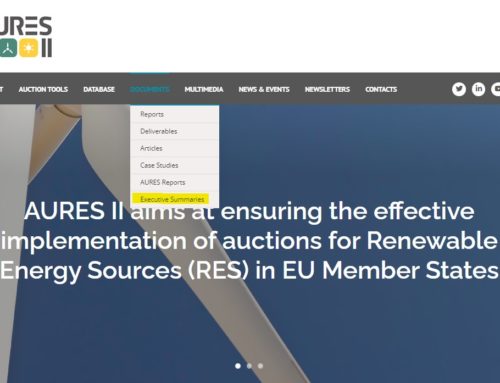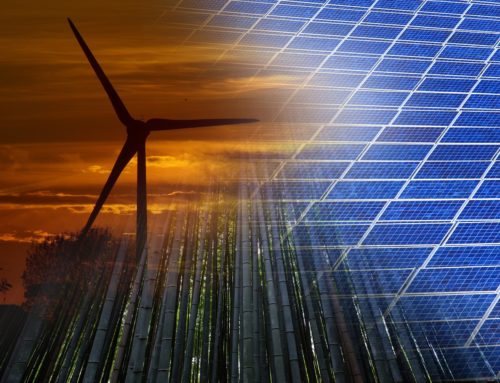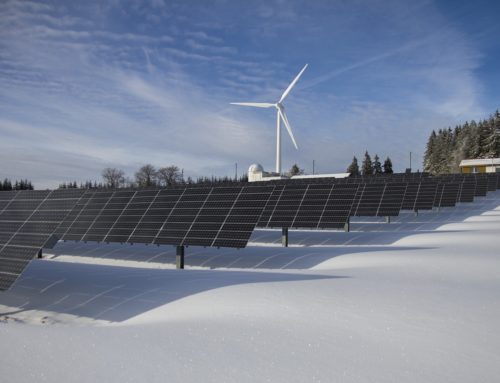In the previous part of the interview with Vasilios Anatolitis, we focused on the bond between AURES and AURES II, and on how the latter is the natural evolution of the former. Having highlighted the strong foundations the new project builds upon, in this second part we concentrate on the goals of AURES II.
What are the main objectives of the AURES II project?
Overall, AURES II aims at ensuring the effective implementation of auctions for renewables in EU Member States (MS) and Energy Community countries.
Our project will supportJust like administratively set support, auction-allocated su... an efficient and effective auctionAn auction is a market mechanism with the aims of allocating... design throughout the EU (and beyond) in order to reduce the costs for consumers and provide a stable framework for investors. We aim to further strengthen the knowledge base, provide insights on the direct and indirect effects of auctions and to investigate instruments on how to mitigate the negative effects. Furthermore, we want to enhance the discussion on the field of RES auctions.
Why are these objectives timely and important?
In recent years, auctionAn auction is a market mechanism with the aims of allocating... schemes for the allocation of supportJust like administratively set support, auction-allocated su... for electricity from renewable energy sources (RES-E) have been advancing rapidly across Europe. Auctions have succeeded to bring down supportJust like administratively set support, auction-allocated su... levels and increased planning capability for RES deployment and state budgets. In some unfortunate cases, they have, however, also resulted in delayed or unrealised projects and increased uncertainty for project developers. A variety of auctionAn auction is a market mechanism with the aims of allocating... designs are still being tested and introduced in EU MS, and the recast of the Renewables Directive (RED-II) addresses several points related to auctions.
There is a need for further assessment and improvement of national auctionAn auction is a market mechanism with the aims of allocating... applications to ensure the future success of RES-E auctions in Europe. New topics currently high on the involved policymakers’ agenda include the implementation of technology-specific versus technology-neutral supportJust like administratively set support, auction-allocated su... schemes, exemptions from competitive supportJust like administratively set support, auction-allocated su... allocation for small scale installations, the cross-border opening of supportJust like administratively set support, auction-allocated su... and special provisions for RES-E community projects. Most of these issues are thoroughly addressed by AURES II.
What is the expected long-term impact of the project?
AURES II will significantly impact the development of enhanced RES-E supportJust like administratively set support, auction-allocated su... policies. By adapting the design of RES-E auctions throughout the EU, their performance with regard to various policy goals can be improved. Through the identification of best practices in auctionAn auction is a market mechanism with the aims of allocating... design and related implementation procedures, the project will achieve substantial and measurable reductions in transaction costsTransaction costs are referred to as all costs incurred in p... for the authorities in charge of designing and organising RES-E auctions. This impact will be achieved through capacity building, i.e. a better understanding of auctions and their applicability for RES-E by policymakers and market participants.
In terms of monetary value for the years 2020 to 2030, we assume (approximating from our model results) AURES II to lead to a decrease of 20-30 million € annually in transaction costsTransaction costs are referred to as all costs incurred in p... related to the introduction and undertaking of auctions for RES supportJust like administratively set support, auction-allocated su... in all EU Member States, savings in supportJust like administratively set support, auction-allocated su... expenditures of 61-101 mio €/a, as well as a decrease of 2-12 mio €/a in electricity generation cost. These savings constitute real cost effects and benefit overall social welfare.




